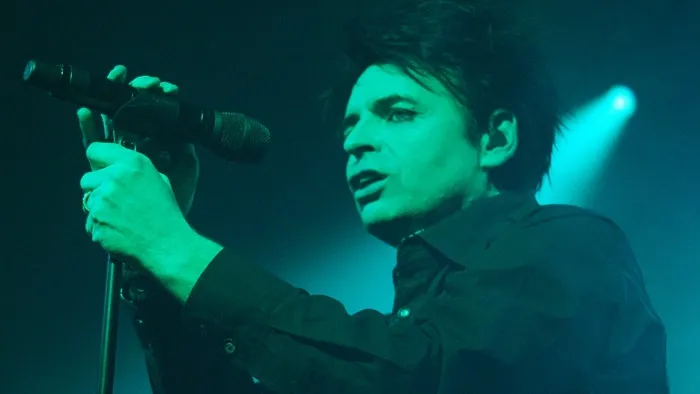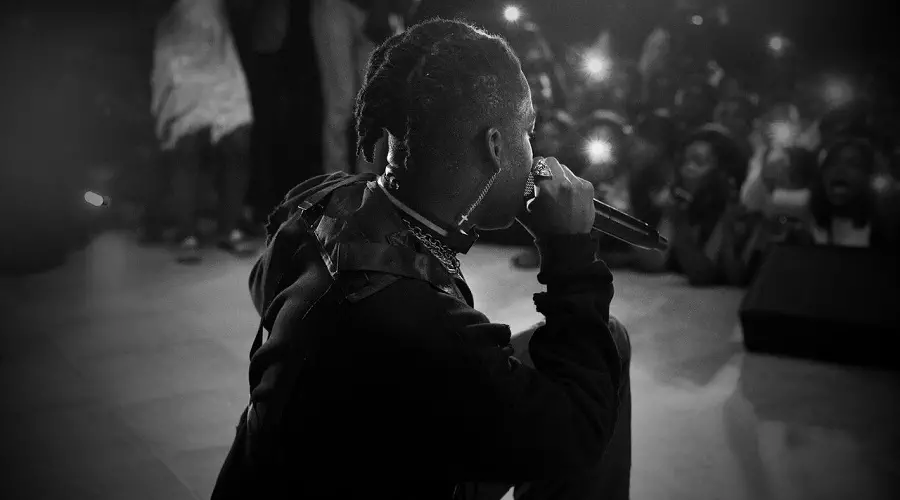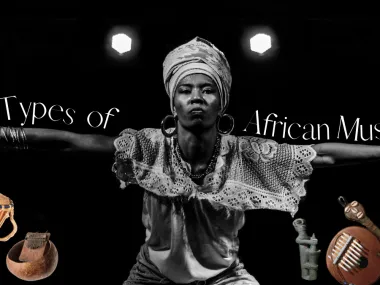We’ve heard of music genres named after musicians, record labels, and even hippie movements. But have you ever heard of a genre named after a musical device? I bet you didn’t.
Synth music, or synth pop, gained its name because it heavily depends on the synthesizer, an electronic musical instrument that looks like an org keyboard.
Some describe synth music as the less complicated cousin of electronica, and some call it the post-punk genre. Is that true? Let’s find out!
What Is Synth Music?
Synthpop is a music genre that gained success and became known in the ‘80s. It’s a combination of new wave electronic music with some elements of punk.
Around that time, a lot of artists coming out of the rubble of punk music started using synthesizers to create music. The list goes long, but maybe the most prominent ones were Tears for Fears, Depeche Mode, and Human League.
The genre is sometimes called ‘electropop’ because it branches out of the ‘70s electronic music. Its songs are known to be succinct and short; that’s why they were perfectly eligible for playing on MTV and FM radios.
The reason people consider synth as electronica’s cousin is its roots in experimental music. Both genres are somewhat similar, but the synth is less complicated and easier to play.
Most listeners thought synth-pop wasn’t created to last. They waited for the genre to be lost among the history pages when the hype around synthesizers went down. However, the genre proved them wrong.
Once, Gary Numan thought it’d be nice to try creating music on a Moogman synthesizer. He loved the sound, ‘Friends’ Electric? was released, and history was made.
A Brief History of the Synth Pop Genre
The most interesting thing about synth music is that no one expected it to last. Its starting power wasn’t strong, and no one took it seriously.
It wasn’t long before everyone, including serious musicians, started acknowledging the huge commercial success of the genre.
By the mid-’80s, synth-pop was dominating the scene before going off the radar again in the ‘90s.
Let’s see how synth-pop rose from an electronica subgenre to a revolutionary genre that still lives today.
The Start
Although there’s no particular starting point for synth-pop, Tubeway Army laid the foundation for the genre with their memorable hit, Friends? Electric. The best part about this is that they never meant to create a new genre.
As always, Gary Numan was experimenting with sounds, and he tried his luck with a Minimoog synthesizer. They all fell in love with the sound, and they took the musical device as their weapon of choice. The song reached the top of the charts in the UK, and many people believe it’s the reason Numan went solo shortly afterward.
So, we can say that song was the key moment for the genre. Synthpop is still associated with punk to this day because a post-punk band supposedly started it.
Similarly, when New Order was created after the downfall of Joy Division, they took the synthesizer as an integral part of their music, bringing more attention to the post-punk genre.
Shortly after, the genre rose to worldwide popularity, thanks to the rapid success of Thomas Dolby, Duran Duran, Alphaville, Soft Cell, and the like. Many thanks also go to A Flock of Seagulls, whose ‘I Ran (So Far Away)’ hit of 1982 became a huge MTV hit.
The Merger
After the initial hype went down by the end of the ‘80s decade, the synth-pop genre started to merge with a lot of electronic dance genres. Some musicians blended it with Detroit techno; others did it with Chicago house and other dance styles.
At the same time, a lot of groups started playing synth-pop at dance clubs in various places around the world, including Berlin, New York City, and London. Among these groups are Pet Shop Boys, Erasure, and The Communards.
The ‘90s is considered the revolutionary decade of synth-pop. In those few years, synth music got its pop label by using live instruments and adding the genre’s elements to the music.
By the 2010s, a new wave of synth artists emerged after guitar music started fading gradually, dictating a new era for the genre.
The list goes long, but these artists include Calvin Harris, La Roux, Lady Gaga, Famous, and the Naked. A lot of indie artists also adopted the genre, using keyboards and drums to create their music.
Between Then and Now
They say that everything that goes around comes around. Synthpop lived true to that statement, having faded into the rubbles in the late ‘90s. The slump ended shortly in the 2010s when modern artists adopted the genre and added pop elements.
In my opinion, the comeback of synth-pop was due to the developing artists who were too young to jump into synth the first time it became popular. Bands like the Killers and the Postal Service were the reason pop grew more popular in that era.
Artists like Lady Gaga only helped the genre gain more fame. She’s one of the few who were courageous enough to dig into electropop and synth-pop, and she drove the genre to unraveled success.
Calvin Harris also contributed significantly to the cause, being one of the few artists who built their whole careers on synth-pop and its subgenres.
For now, synth-pop is still as loved and celebrated as it was in the ‘80s. Since the ‘90s slump, it has only gained more fans, thanks to the younger generations and their freedom of choice.
What Are the Characteristics of Synth-Pop Music?
All genres have a couple of key components that identify them. Jazz has the blues and swing notes, while hip hop has the rhythmic speech. Synthpop is no different; there are some common characteristics that all songs share. Here’s a roundup of all of them:
Synthesizers
We can’t talk about the common characteristics of synth-pop without mentioning the device that started it all: the synthesizer. Nearly all synth-pop songs revolve around drums and synthesizers. If not for them, the genre wouldn’t have been born.
That said, only a few synthesizer brands are used for producing synthpop music. The most famous instruments used by synth artists are the Roland Jupiter, the Yamaha DX7 keyboard, the Sequential Prophet-5, and the Roland TR-808 machine.
Androgynous Looks
Synthpop isn’t all about lyrics, music, and drums. It’s also known for bending gender standards. A lot of synth-pop groups and artists adopted androgynous looks, following in the steps of David Bowie and his famous worldwide looks.
Those include Phil Oakey, the frontman of the Human League, along with Annie Lennox, the lead singer of Eurythmics. Martin Gore of Depeche Mode also used to follow gender-bending fashion.
Simple Lyrics
Reviving disco vibes, most synth-pop artists went for simple lyrics with easily understandable meanings. Their songs revolved around partying, love, longing, and similar topics.
These include Don’t You Want Me by the Human League, I Feel Love by Donna Summer, and a lot of similar songs.
A few songs took a different approach, going for themes that are considered a bit dark. One of the best examples of this is Enola Gay by Orchestral Manoeuvres in the Dark. However, the main theme of the genre remained around love and similar meanings.
What Is a Synthesizer?
Since I mentioned synthesizers a lot throughout the article, it’s only fair that I talk about what it is and how it heavily influenced the music industry.
A synthesizer is an electronic musical instrument that uses analog processing and oscillations to produce sounds. True to their name, synthesizers produce sound through artificial acts, unlike acoustic instruments.
They produce the same sound as acoustic devices, but they don’t do it in the same way as these instruments do.
Most synthesizers have labels of other instruments, like ‘piano.’ Clicking on these labels, you’ll get the same sound of a classical piano, but it’s generated through a series of synthetic tone generators. So, it gets you the sound without the actual use of another instrument.
Origins of the Synthesizer
Synthesizers have been around for quite some time. You won’t believe this, but the first trace of a synthesizer goes back to 1897. What I’m talking about is the Dynamphono that Thaddeus Cahill patented. A lot of synthesizers now were inspired by that thing.
The Dynamophone isn’t the only one, though. A lot of synthesizers inspired later devices, such as 1928’s Theremin and 1956’s RCA Electronic Music Synthesizer Mark I.
Still, the breakthrough of synthesizers was all thanks to Robert Moog, whose synthesizers still live and inspire till today.
In the beginning, his synthesizers couldn’t fit in a room.
The Minimoog later emerged, allowing home users to buy it. It’s now sold for high prices for the unique sounds it produces. It utilizes square waves, sine waves, low-frequency oscillators, and saw waves to produce the music.
Digital synthesizers didn’t come into play until the ‘70s. By the ‘80s, they had already dominated the scene of pop music.











